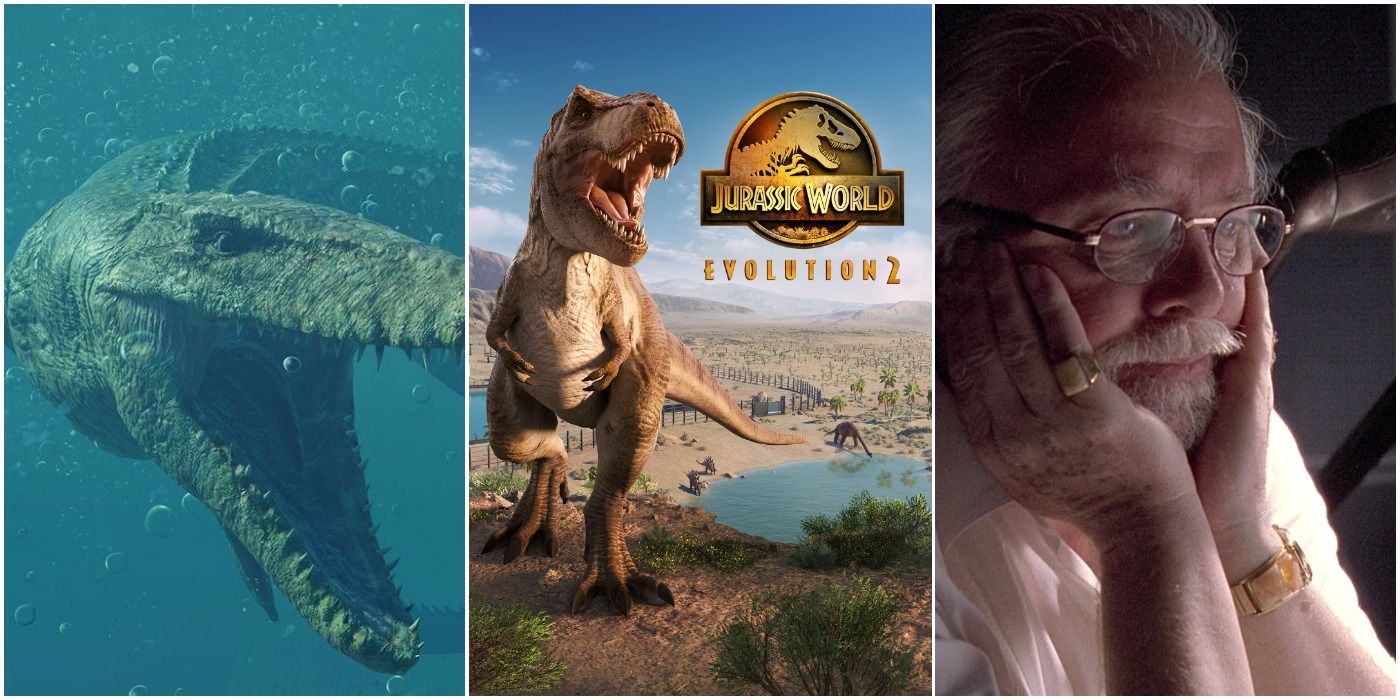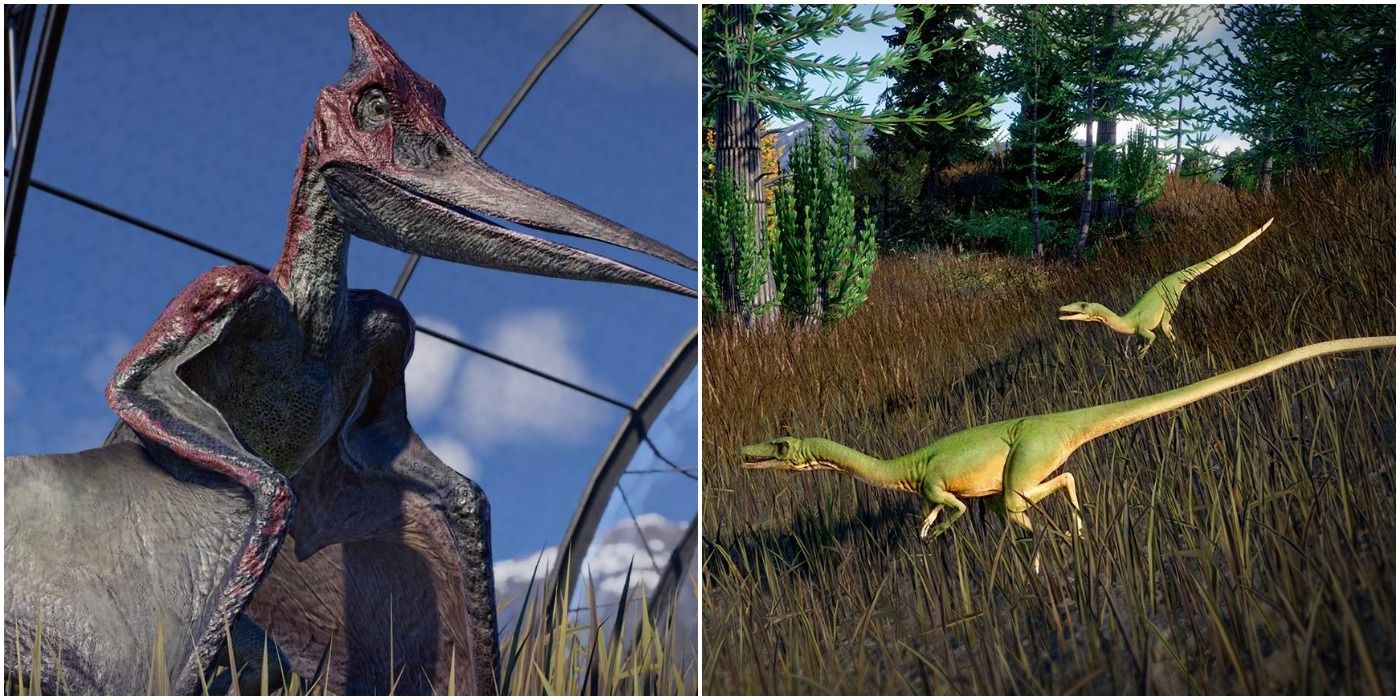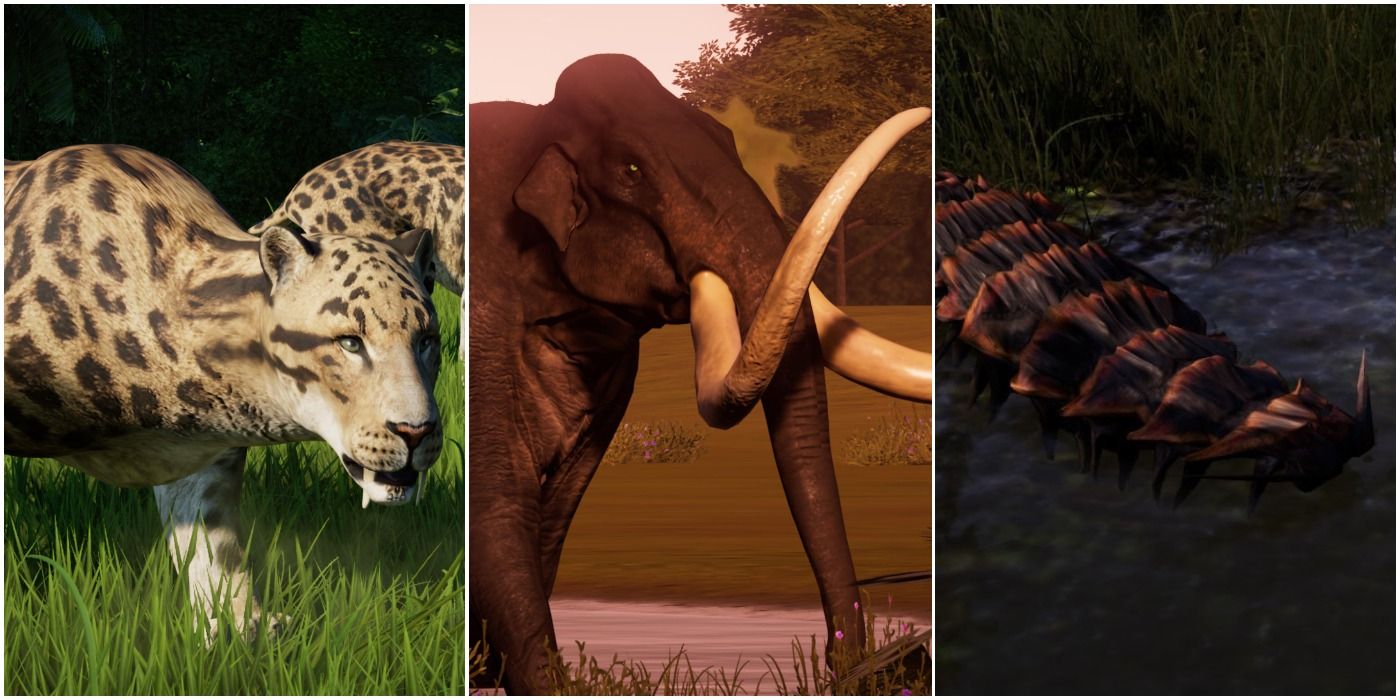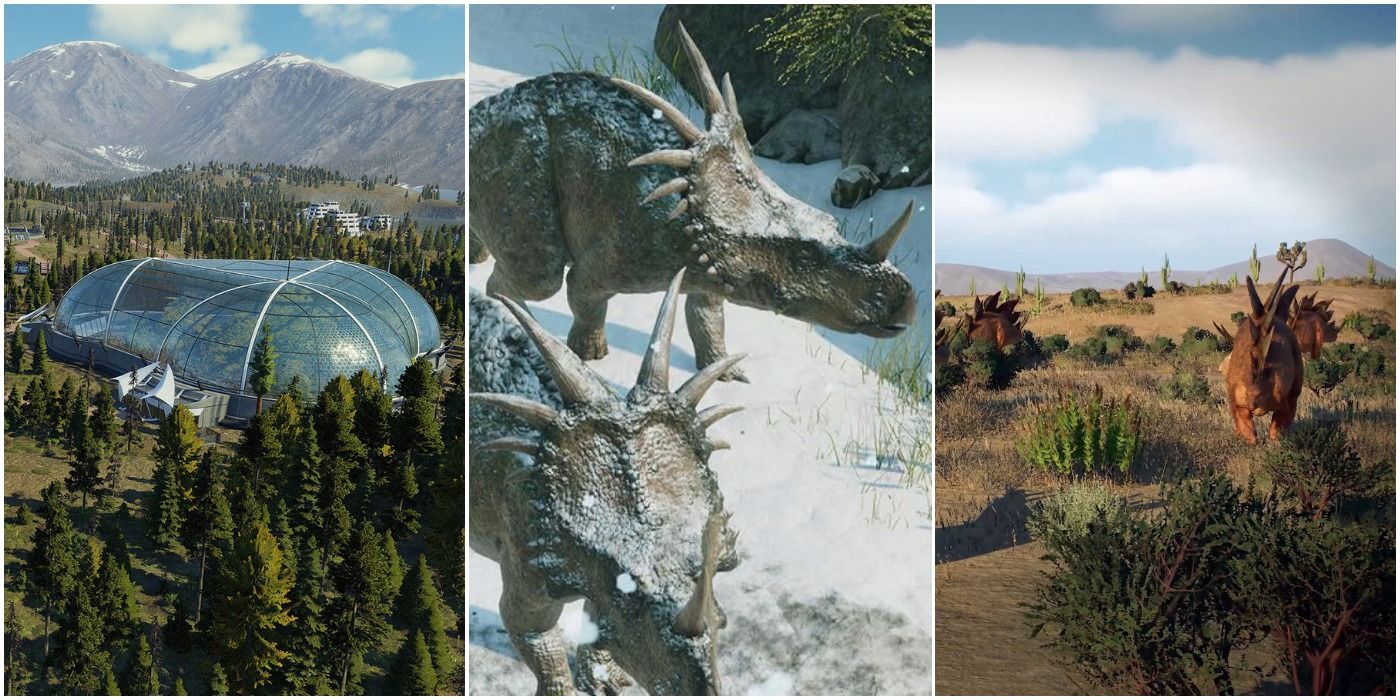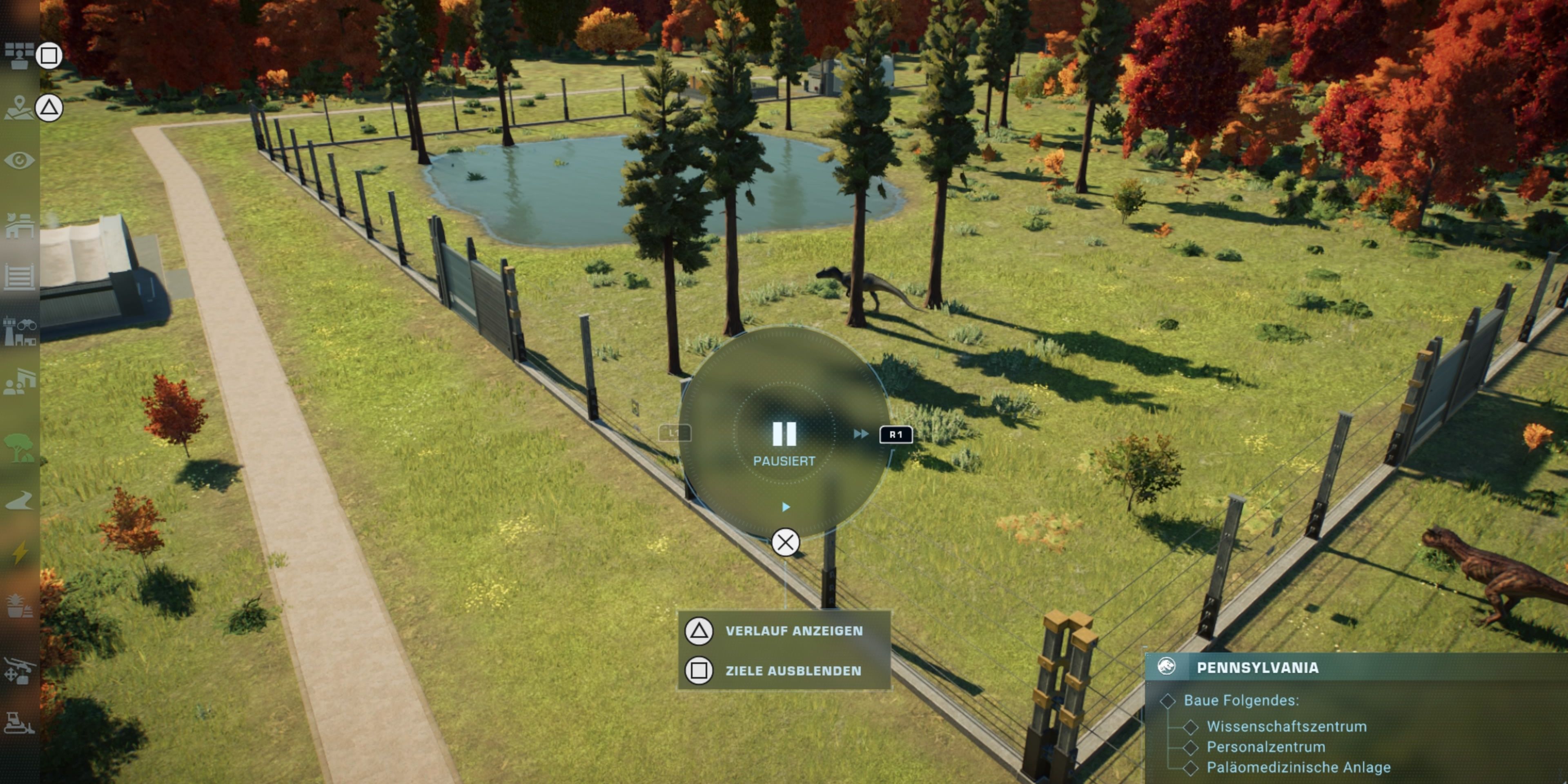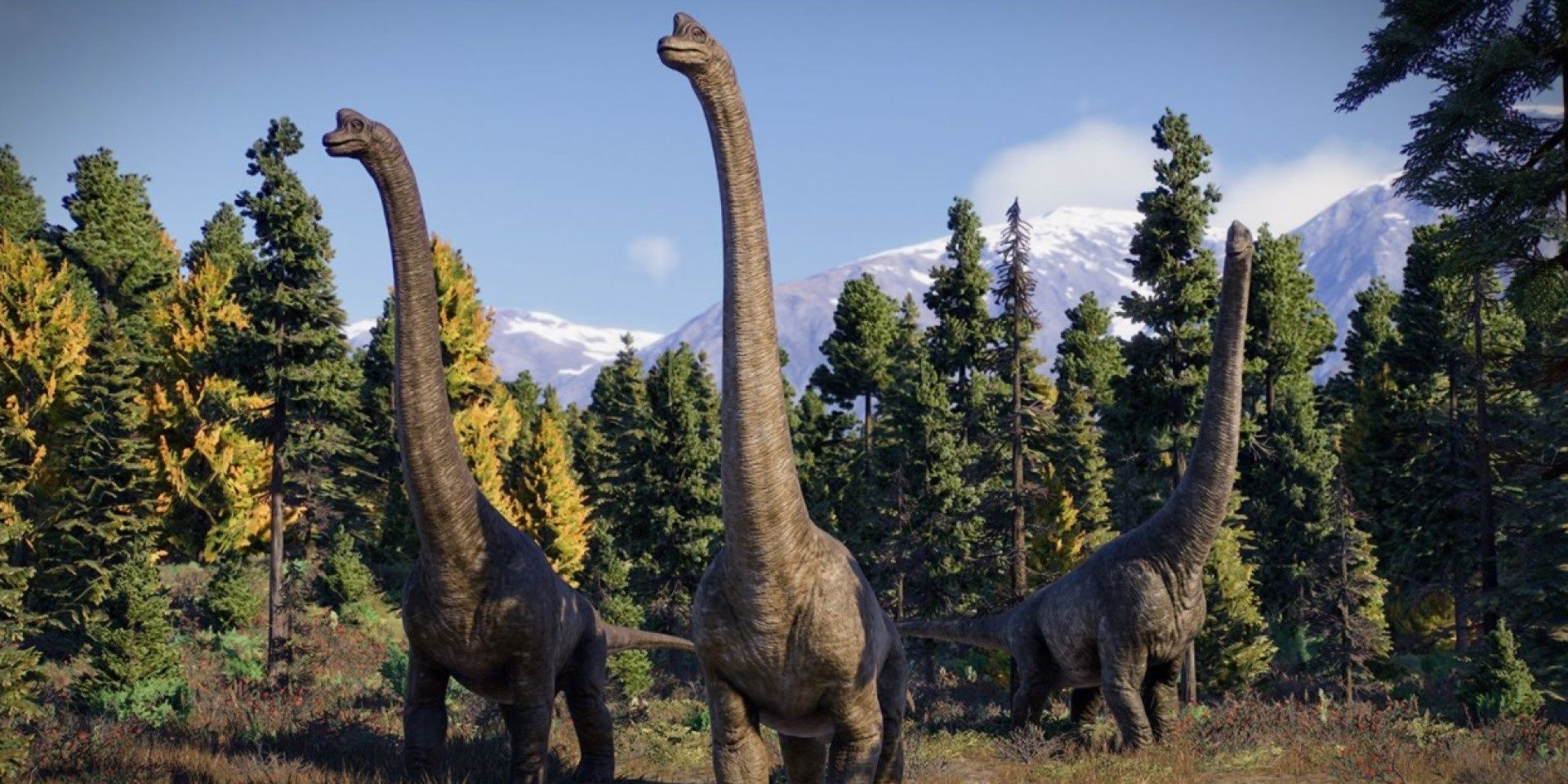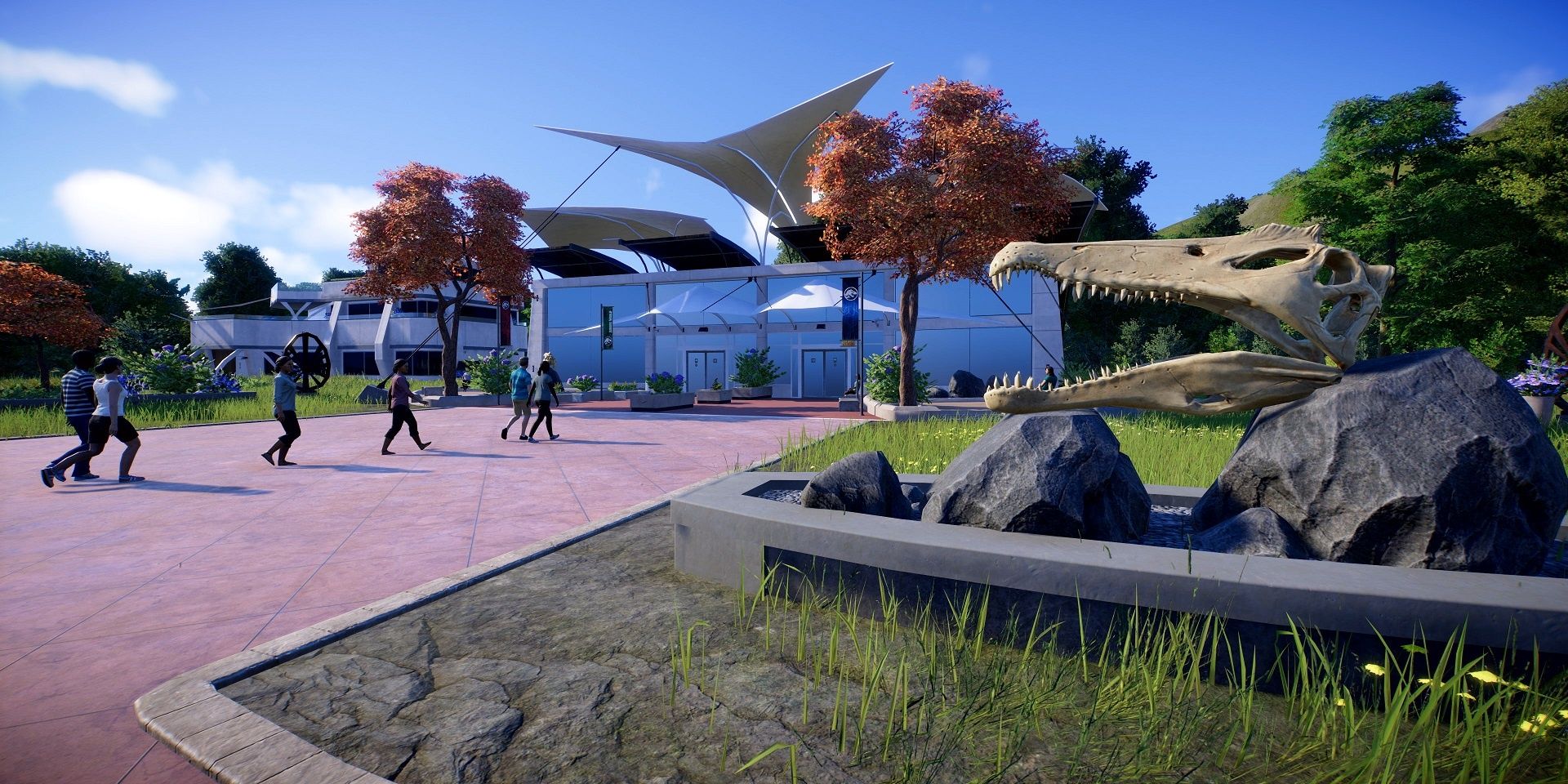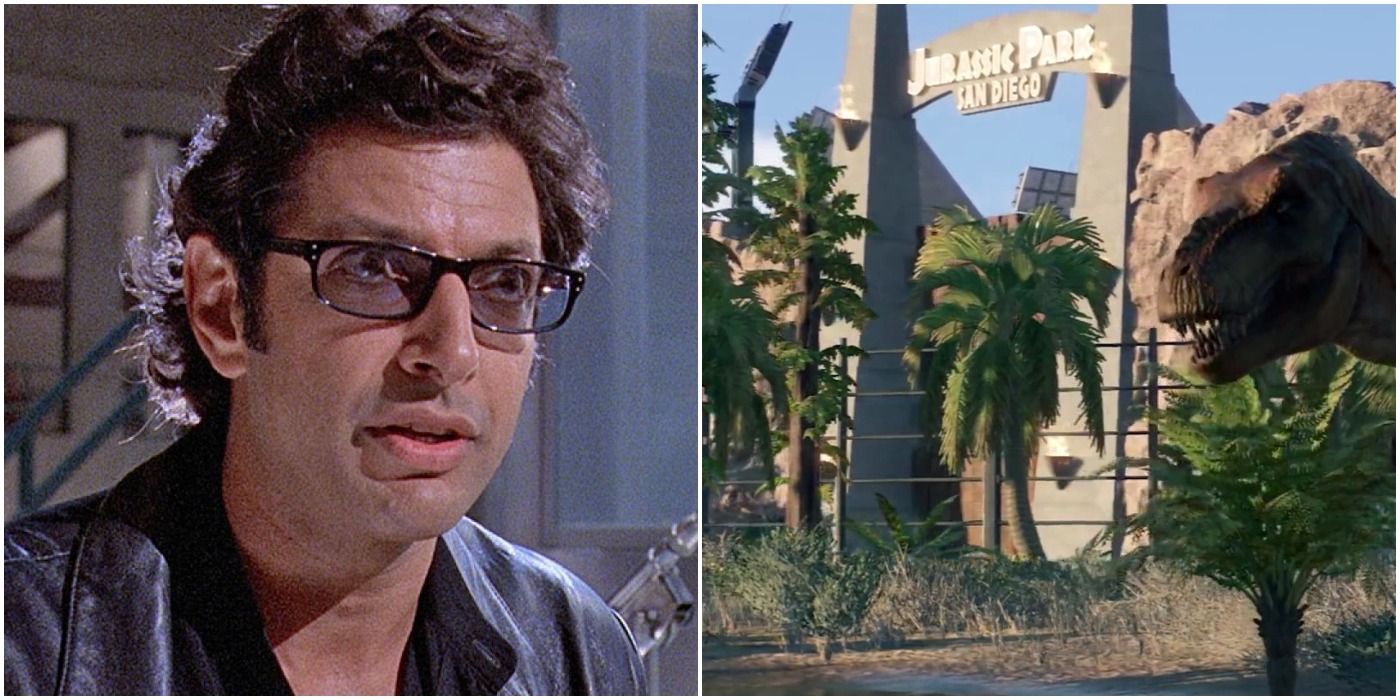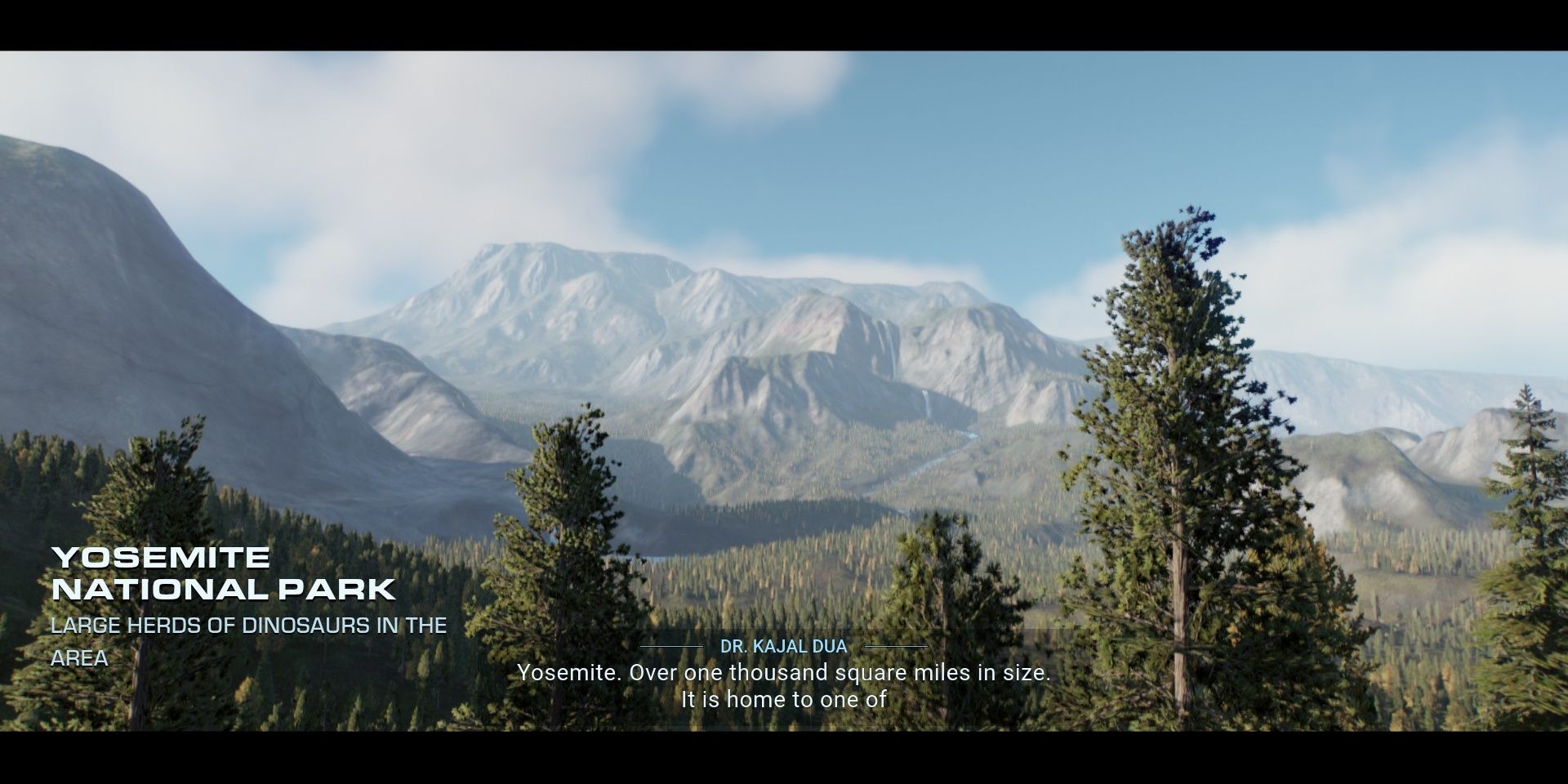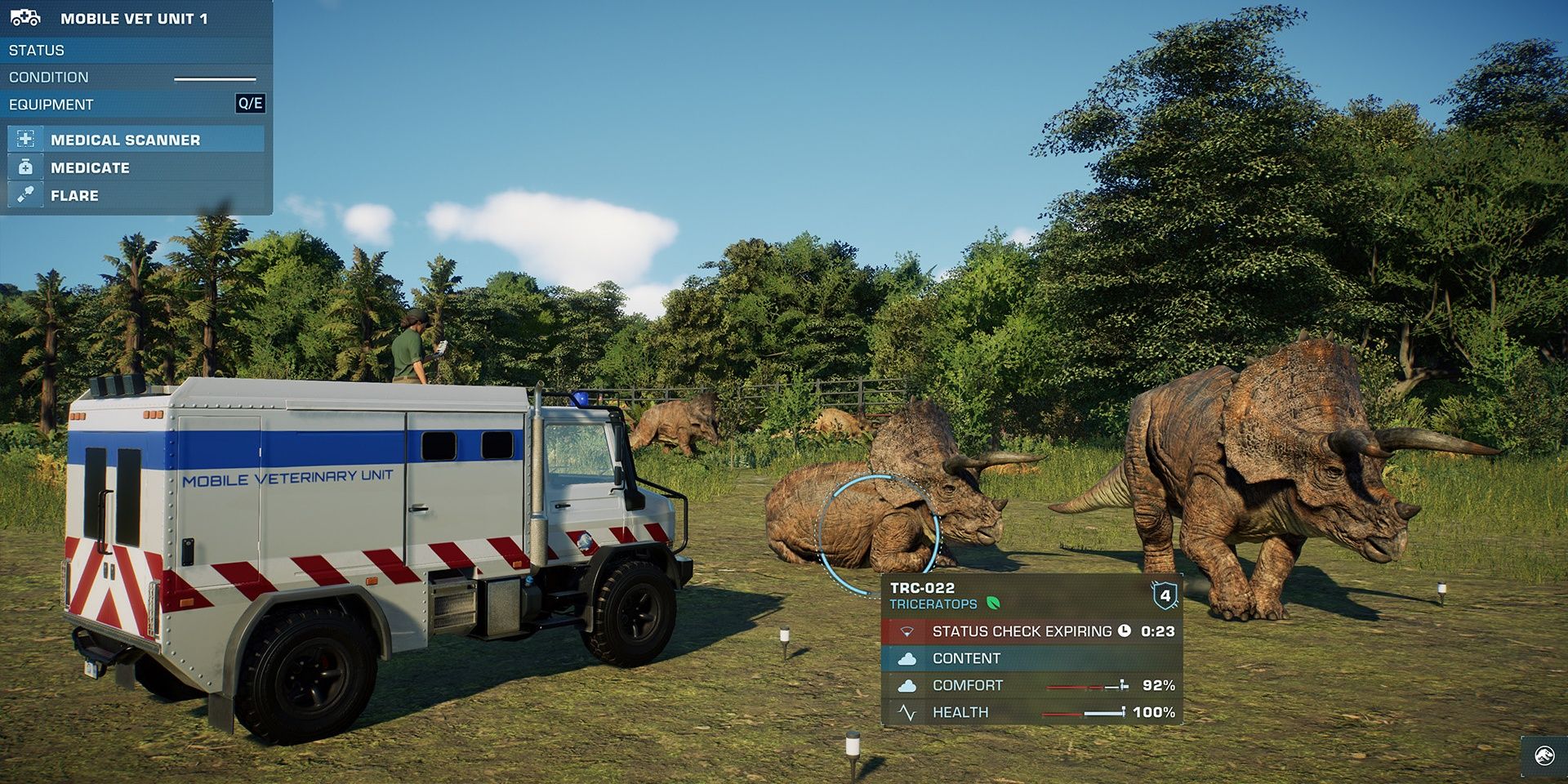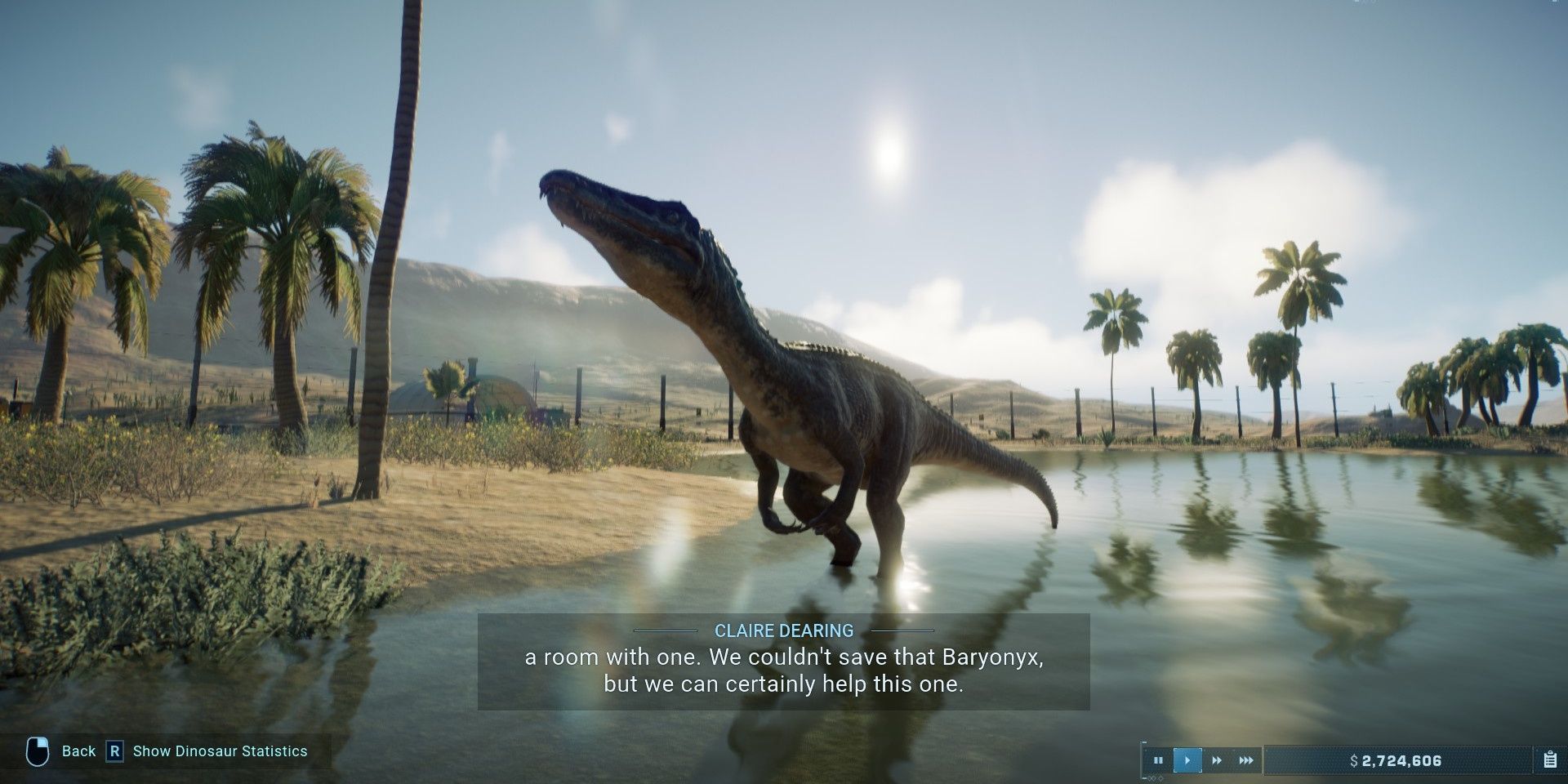The sequel to the popular Jurassic Park sim, Jurassic World Evolution 2, has been a long time coming, and it has thus far surpassed the first game in many ways. The title is a love letter to both dinosaur and park sim fans, expanding on its predecessor's features to create one of the most engrossing examples of the genre in recent memory. Sadly, though, not everything is sunny on this island.
The game comes with a a few notable issues and misguided decisions. Though these aren't enough to destroy this dinosaur fantasy, they do hamper the experience. Whether the developer Frontier patches them (or players simply look past them) remains to be seen. The previous Jurassic title didn't have the smoothest launch, so there's every reason to believe the creators will fine-tune their work.
10 Loved: New Animals
A sequel should naturally expand on what the first game had to offer. Fighting games apply that mantra to their character selections, and Jurassic World Evolution 2 operates on the same mindset with its creature collection. In the new game, developers have includd several new dinosaurs like Coelophysis and Amargasaurus.
Though these are similar to previous types like Compsognathus and Apatosaurus, respectively, they're also joined by the welcome additions of flying reptiles and underwater creatures. Aerial animals include Cearadactylus, Tapejara, and several others. On the aquatic side, players have sea monsters like Elasmosaurus, Liopleurodon, and the popular Mosasaurus. In the first game, the pterosaurs were reserved for DLC, and the aquatic specimens were non-existent. Suffice it to say, this is a huge step up.
9 Didn't Love: No Mammals Or Other Animal Classes
Dinosaurs were far from the only creatures that existed during prehistoric times. Mammals came to prominence afterwards, with powerhouses like Smilodon and the woolly mammoth dominating their respective areas. Giants existed before the dinosaurs as well, with super-sized insects such as Arthropleura creeping around the Carboniferous Period.
These were all modded into the first game by devoted fans and archaeology afficionados, showing some demand for their presence. Neither Jurassic Park nor Jurassic World must be limited to reptiles. Plenty of fans would have loved to see them cover additional eras of prehistory.
8 Loved: New Environments
The first game gave players numerous islands on which to build their dream dino parks, but these locales were all variations of the same tropical landscape. Not only did this get repetitive from an aesthetic standpoint, but it was inauthentic, as finosaurs lived all over the planet. Jurassic World: Fallen Kingdom only cemented the need for expansion when it let the island's dinosaurs loose on the world.
Luckily, Jurassic World Evolution 2 provides several biomes in which to build a park. Players can test their skills in snowy mountains, harsh deserts, lush forests, and more. Each biome comes its own challenges to the animals' survival and guest comfort, adding much-needed variety to the experience.
7 Didn't Love: You Can't Fine-Tune Those Environments
While the biomes themselves are stellar, the ability to affect them been has downgraded in select areas. For example, individual tree placement is gone. The developers didn't change it; it's just gone without comment. That's not the only nagging absence, though.
Players still can't build paths over water or other natural features. The concept of a bridge apparently eludes the architects of this park. The monorails have a bit more flexibility, but those are for transportation, not exploration. Such issues are shortsighted from both a business and a game design perspective.
6 Loved: Improved Animal Behavior
While the first game's dinosaurs looked great in motion, closer observation revealed that their AI was severely limited. They only came with a handful of set behaviors. Many of these were basic and didn't flow into each other naturally, making the animals seem robotic as a result.
The programmers remedy that issue here with a ton of new behaviors for each animal. Additionally, these actions are more nuanced, with variations on pack hunting, socializing, and environmental interaction. For the icing on the cake, it's all illustrated with the gorgeous animations. No longer do these creatures feel like brainless bots; rather, they're several steps closer to real animals.
5 Didn't Love: Uninvolving Guests
As a theme park manager, the player's job is to satisfy guests. This was straightforward in the last game, since all patrons wanted the same basic necessities. The developers try to amend that blanket simplicity by crafting a variety of guests here. Park-goers come in several groups, each with its own desires for entertainment. On paper, this should provide an authentic challenge.
In execution, however, it falls somewhat flat. Customers indeed have unique preferences, but this doesn't affect gameplay or players' profit margin much. The general goal remains the same: build as many attractions and facilities as possible. Because of this, the guest system comes off as a shallow tool, one which makes gameplay seem more complex than it actually is.
4 Loved: Chaos Theory
Jurassic World Evolution 2 comes with a wealth of content. Not only does it feature a more involving Story Mode which downplays the repetition of its predecessor, but the Challenge and Sandbox Modes make a welcome return. More intriguing, however, is the new Chaos Theory Mode.
As the name suggests, this mode asks, "What if things happened differently?" It presents alternate scenarios for all five films thus far. For example, what if the original park on Isla Nublar worked out? What if the San Diego exhibit launched in The Lost World? These chapters are essentially a second Story Mode, coming with a plethora of twists and turns for those wanting something less predictable. The mode truly shows the developers' dedication to the movies. More importantly, fans can play that game of Prehistoric Pretend they always wanted.
3 Didn't Love: Short Campaign
Again, the Story Mode here is more engaging. It goes beyond park-building repetition and gives players a variety of missions regarding rescue and other issues surrounding dinosaurs in the wild. The problem is that the campaign is on the short side.
The total playtime is three to four hours, which is downright pathetic for a full-price release. One can appreciate the lack of padding and excessive downtime of the former entry, but this functions as a double-edged sword. Chaos Theory and other modes lessen this blow, but it's still all too brief (probably due to the sixth movie's delayed release).
2 Loved: Deeper Management
The developers already laid a solid foundation for park management the first time around, so they only had to build on that foundation to succeed. Among the more interesting improvements is the scientist recruitment system. Players hire specialists, each with pros and cons, to work on the various species from the preliminary research all the way to incubation. Though not executed as well, the attempt to do the same with guests and their entertainment preferences is appreciated. These add more nuance to what were previously just mindless portraits and tools for profit.
Those subtleties extend to the quality of life improvements. The menu navigation now makes it easier to fulfill the needs of both guests and animals. Best of all, though, is the ability to fast forward. Getting through the grind is no longer the sedentary chore it was before.
1 Didn't Love: Arbitrary Omissions
For all the strengths of the new management system, it does come with a few glaring issues. Namely, the game blocks select options for seemingly no reason. For instance, players can't access certain buildings in certain modes, or a dino may be available on one map and not another. Worst of all is the inability to access the campaign maps in Sandbox Mode.
These omissions are akin to the first title's limitation once the Return to Jurassic Park DLC launched. Players couldn't mix-and-match facilities from the old and new eras. One would think a sequel would fix such limitations, but that's sadly not the case. If anything, the issue has grown more prominent.

